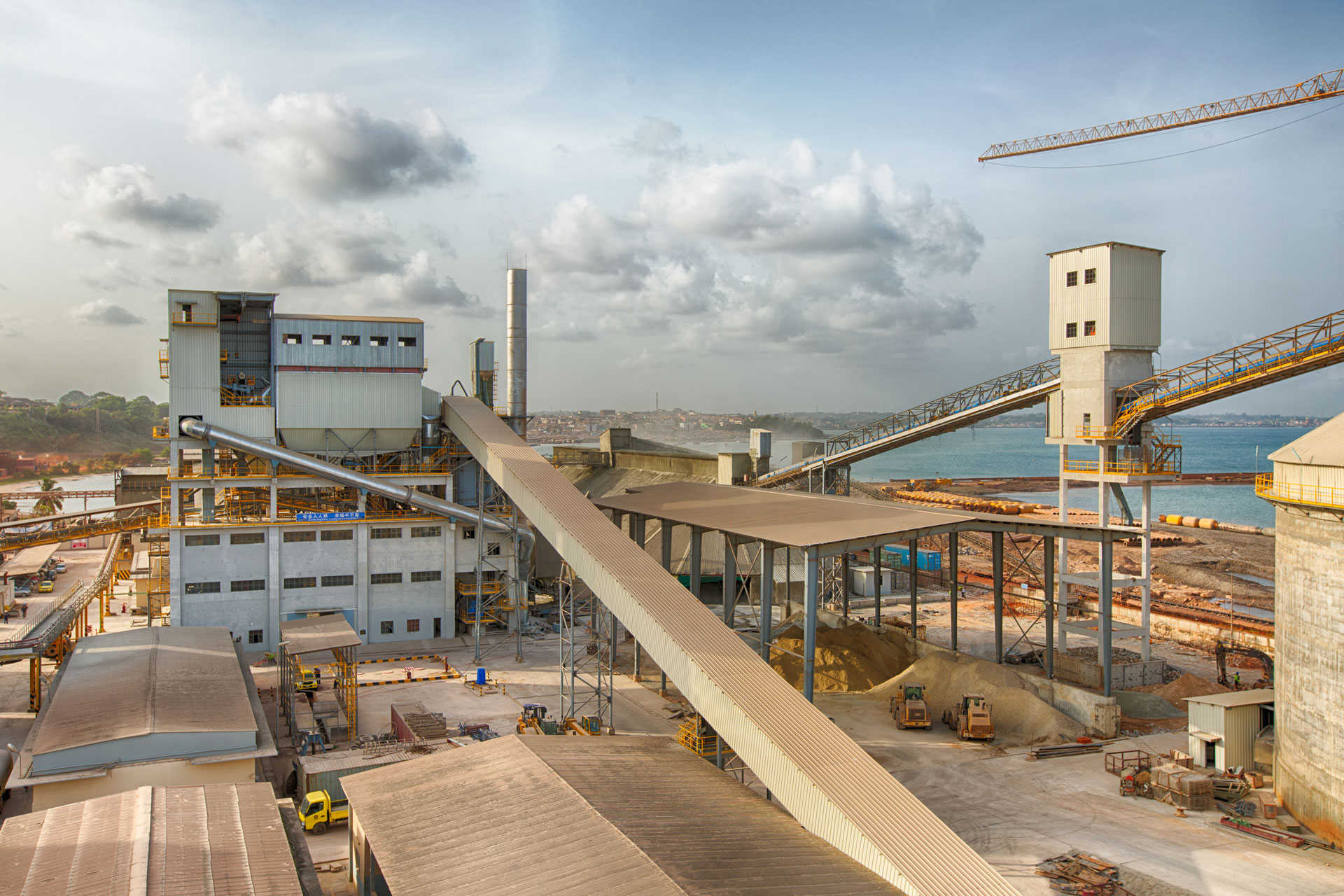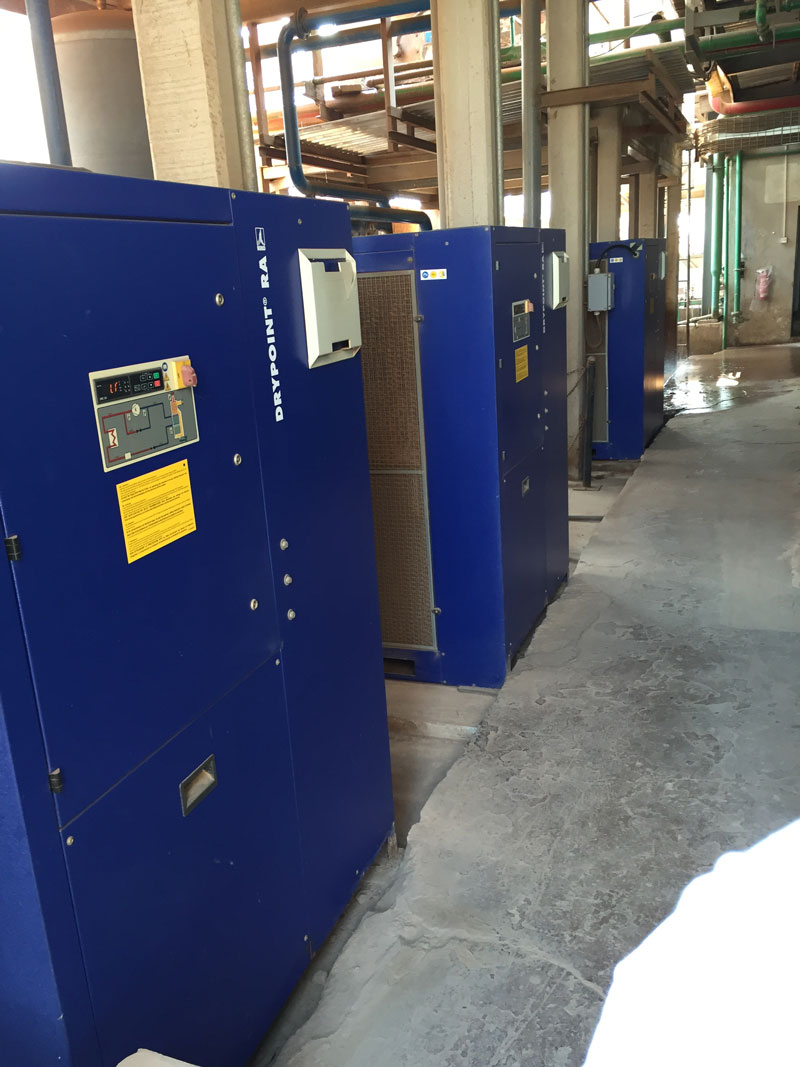Demanding compressed air treatment in cement production
| Industry: | Building material |
| Customer/Location/Year: | Ghacem, Takoradi (Ghana), 2016 |
| Use of compressed air: | Conveyor air, process air |
| Installed products: | DRYPOINT RA, CLEARPOINT, ÖWAMAT |
Cement and water are like oil and fire – best kept far apart from each other. When it comes to cement production, this is not an easy task, especially where the plant is located right on the seashore in tropical Africa. Under such conditions, the preparation of compressed air becomes a real challenge. Cement producer Ghacem in Ghana knows this all too well.
Ghana is a tropical country with a dry and a wet season. The length of days and nights does not change over the year. In the north, we find a savannah climate while the south is dominated by rainforests and monsoons. Most of the booming industries of Ghana are located along the Atlantic coast. Takoradi, the third largest city of the country and an important industrial and commercial center, is home to Ghacem Ltd., the largest cement producer in the country.
Established in 1967 as a cooperation of the Ghanese government and the Norwegian Norcem AS, it now belongs to the global HeidelbergCement AG Group. The history of HeidelbergCement in Africa goes back to the mid-1960s when the group first invested in the region. Over time, the activities were expanded to several sub-Saharan countries. Today, HeidelbergCement is the leading cement producer in Western Africa. The group operates a network of twelve production plants in nine countries, thus contributing to the economic development in the region.

In line with other sub-Saharan countries, Ghana's economy is expanding on the back of its strong extractive industries and has a healthy construction sector. Steady economic growth, an increasing population and urbanization as well as infrastructure projects are boosting construction and have led to a strong demand in cement.
More than 30 million tons of cement
From its start in 1967, Ghacem Ltd. has produced more than 30 million tons of cement. Given the challenging climate conditions, this is a major achievement. The Ghacem factory in Takoradi is just a stone's throw away from the Atlantic, and workers might even hear the surf and feel the sea spray on their faces. Water is therefore a constant presence. In a cement plant, this poses a huge challenge.
Rock from a quarry is first crushed and transported on conveyor belts, ropeways and railways to the aggregate store of the cement factory. Here, the raw material is placed in a blending bed silo and homogenized for subsequent grinding in a mill, followed by dedusting. The meal is converted in a rotary kiln into clinker minerals at temperatures of up to 1450° C. The cooled clinker is then ground to a grain size of maximum 50 mm and stored in silos or enclosed halls in order to minimize clinker dust emissions. For the production of cement, the clinker is milled to powder. At this step, other ingredients such as slag sand or fly ash might be mixed in. To control the solidification of the cement, a sulphate carrier is added. In order to protect resources, gypsum or anhydrite from natural sources is used for this purpose.
Compressed air: crucial medium along production chain
Compressed air plays a crucial role in virtually all steps of the cement production process. The cement mills at the Ghacem plant in Takoradi, compressed air is used for a variety of purposes. First of all, it is used as conveying air for the transport of the cement from the mills to the silos. In addition, it serves as control air for several functional elements in pumps and control systems, and last but not least, it is used to blow out the filters. These are all applications where moisture contained in the compressed air is a major concern, as it can lead to faults, malfunctions and disruptions in production, not to speak of increased maintenance and repair costs. Such problems occur as moisture leads to clumps in the cement and the additives, deposits and corrosion in plant components. For high-performance plants like the one in Takoradi, it is therefore imperative to prevent such problems at all cost. In the past, given the demanding climate conditions, the company was often struggling here.
This was not least due to the fact that its compressed air drying system for the entire plant consisted of just two dryers. While this arrangement was adequate when the plant first started, it was not able to meet modern requirements. At times, the drying performance was simply insufficient, and the risk of significant water ingress became ever greater. The quality managers at Ghacem had to take measures to prevent such a scenario.
Moisture: checkmate in three moves
Relying on the expertise in engineering and system technology for which the home country of Heidelberg Cement is renowned, Ghacem contacted the local partner of the German compressed air specialist BEKO TECHNOLOGIES. The system provider based in Neuss developed a new compressed air treatment system with three independent sections. Each of the three cement mills has its own compressor, supplying all connected consumption points separately with absolutely dry compressed air.
At the heart of the compressed air treatment for the mills are three DRYPOINT RA 5400 TAC refrigeration dryers, each equipped with a CLEARPOINT L080 prefiltration unit and an ÖWAMAT 16 oilwater separator from BEKO TECHNOLOGIES. A separate DRYPOINT RA 8800 TAC refrigeration dryer, supplies the packaging machines.
The DRYPOINT RA refrigeration dryers are the best choice for the special climate conditions in Ghana. To ensure reliable operation under tropical conditions and to achieve a pressure dew point of 2° C, the local partner decided to significantly overdimension the dyers for Ghacem. In addition, all four dryers have undergone a special TAC anti-corrosion treatment that protects the main components as well as the housing. As a result, the units are long-term protected against the salty sea air.
In the DRYPOINT RA dryers from BEKO TECHNOLOGIES, the air is dried in a counter-flow process with optimized heat exchange along the entire process path, whereby the downward flow of the air is not obstructed in any way. The large counter-flow heat exchanger unit that consists of an air-air and an air-refrigerant heat exchanger cools the compressed air to a temperature of around 2° C. The size and design of the heat exchanger unit promotes effective cooling while minimizing flow resistance.

99 percent separation of droplets
Among the key design features of the DRYPOINT RA refrigeration dryers are the vertical construction of the heat exchanger, allowing for condensate flow from the top to the bottom, a reliable demister and a large settling chamber, preventing condensate ingress. By eliminating obstacles in the air flow path, the compressed air flow is optimized for particularly efficient operation. A constant low pressure dew point combined with a droplet separation rate of close to 99 percent, minimum maintenance and low operating costs are other strong points of the DRYPOINT RA. Cement and water – if not kept apart, they react instantly. At Ghacem, this is no longer an issue.



